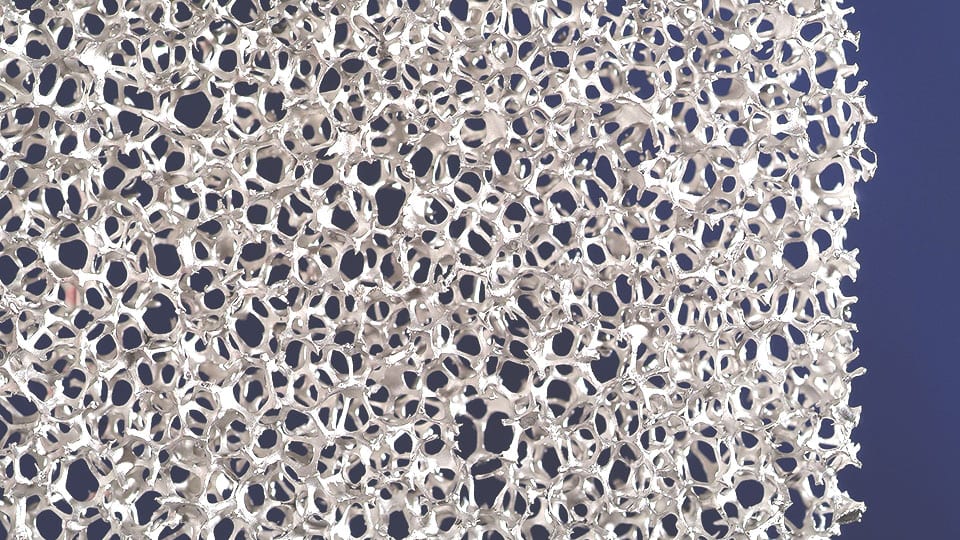
Current trends, such as increased use of electric vehicles or more flexible and resource efficient production methods in the metalworking industry, present new challenges to lightweight construction. In addition to design-based solutions, new material concepts must also contribute to meeting these challenges.Combinations of porous and dense materials are currently used in a variety of products, for example, sandwiches with foam cores, foam-filled profiles or impact absorbing elements. Foam structure products are primarily used in parts with low mechanical loads. They contribute to the overall performance of the part due to their low density, high quality specific stiffness and the ability to absorb large amounts of deformation and vibrational energy during collisions.In addition to the mass production of polymer foams, metal foams - especially aluminum foams - have been used in special applications.The main differences between polymer foams and aluminum foams are higher thermal stability and electrical conductivity, different thermal expansion behaviors and generally higher strength and hardness of metal foams. The disadvantages of aluminum foams are higher raw material costs and the need for finer production and molding processes. The higher process temperatures of aluminum result in more complex process control and reduced productivity compared to polymer foams (aluminum: > 650 ° C), especially when large components or components with complex geometries need to be produced. In the case of a hollow structure in which aluminum foam is filled in situ, a high process temperature causes deterioration of the component material.Compared to 3-D foam assemblies or foam boards, metal foam particles can be produced in a simple and flexible manner and can be combined with polymers, polymer foams and inorganic materials to create innovative custom blends.
Stay Connect